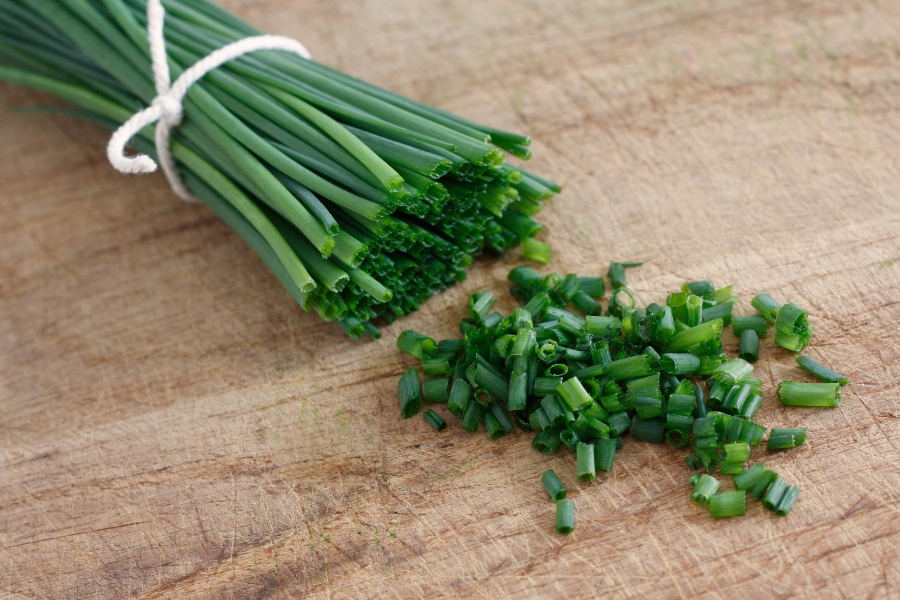Green onions in your salad, green onions in your stir-fry, green onions everywhere! Who doesn’t love the fresh zing they add to almost any dish? This slim beauty has more going on than meets the eye.
Table of Contents
In this post, we’re diving into all things green onion. From mastering the perfect chop to understanding their flowering, and even figuring out if your furry friends can enjoy them too. Got a bunch of green onions in your kitchen? Stay with me, and I’ll show you what you can do with them!
How to Cut Green Onions
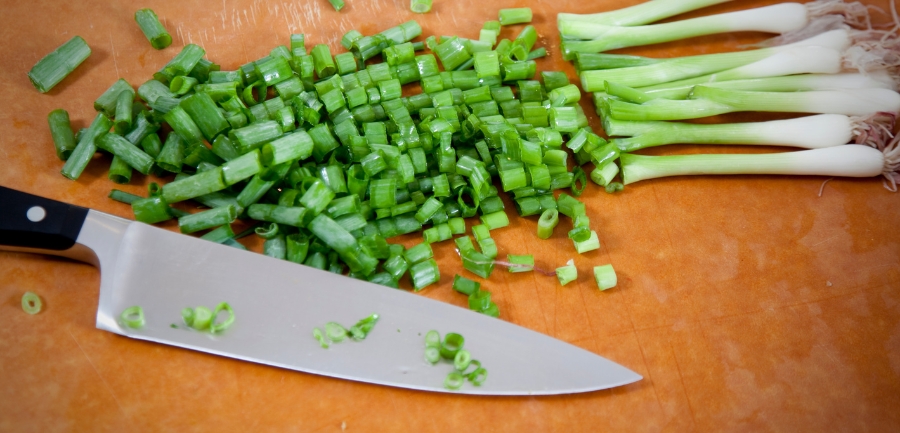
Cutting green onions might seem simple, but there’s an art to it! Whether you want to make thin slices or little pieces, mastering these green gems will take your cookery to the next level. Let’s start hacking away!
Cutting Green Onions – Techniques and Tips
Selecting Green Onions
First things first, grab some fresh green onions from your local market or garden. Look for firm stalks with a bright green color. If they’re waving goodbye, they’ve probably seen better days!
Preparing and Washing
Before you start slicing, give those green onions a good rinse under cold water to get rid of any dirt or grit. Pat them dry with a towel, and you’re ready to rock.
Trimming and Chopping Methods
Grab your favorite knife, and let’s get down to business. Trim off the roots and any wilted parts. Want rings? Slice them thin! Prefer a finer texture? Dice them up! Whether you’re garnishing or cooking, you’ve got options.
Safety Considerations
Keep those fingers safe! Use a claw grip to hold the green onion and guide your knife carefully. A sharp knife is actually safer because it requires less force, so make sure yours is ready for action.
So there you have it, green onion lovers! With these tips in hand, you’ll be chopping like a pro in no time. Stay tuned, though, because we’ve got lots more to explore!
Green Onion Flower – Understanding Onion Flowering
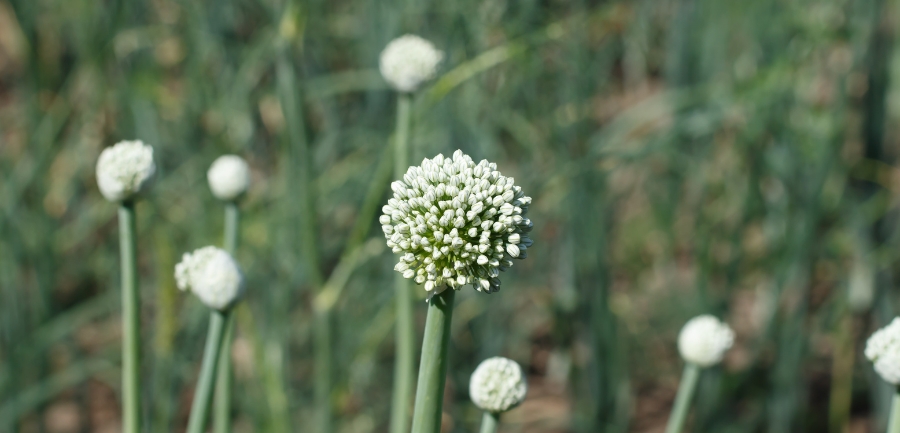
Ever noticed a beautiful flower blooming from your green onion plant? It’s not simply a gorgeous sight; this natural occurrence might have an important bearing on the quality of your green onions. Let’s jump right into blooming!
The Flowering Process of Green Onion
What is Green Onion Flowering?
Green onion flowering isn’t just a poetic term; it’s a real thing! When a green onion plant matures and conditions are just right, it can develop a flower. Here’s what you need to know:
- Type of Flower: The flower is usually a lovely white or pale purple and grows at the top of the stalk.
- Why it Happens: It’s the plant’s way of reproducing, spreading seeds for the next generation of green onions.
How It Occurs
How does this flowering magic happen? Let’s break it down:
- Conditions: Warm weather and longer daylight hours often trigger flowering.
- Growth Stage: Older or “bolting” plants are more likely to flower. It’s like the plant’s grand finale!
The Impact on Taste and Texture
So what does this mean for your kitchen adventures? Flowering can change the game:
- Taste: Flowering can make the green onion stalks taste a bit stronger or more bitter.
- Texture: The stalks might become tougher, especially near the flower.
Green onion flowers aren’t just for snapping a pretty photo (though they are Instagram-worthy!). Understanding the flowering process can help you choose the best green onions for your culinary creations. Keep those eyes peeled next time you’re in the garden or at the market!
Green Onion from Seeds
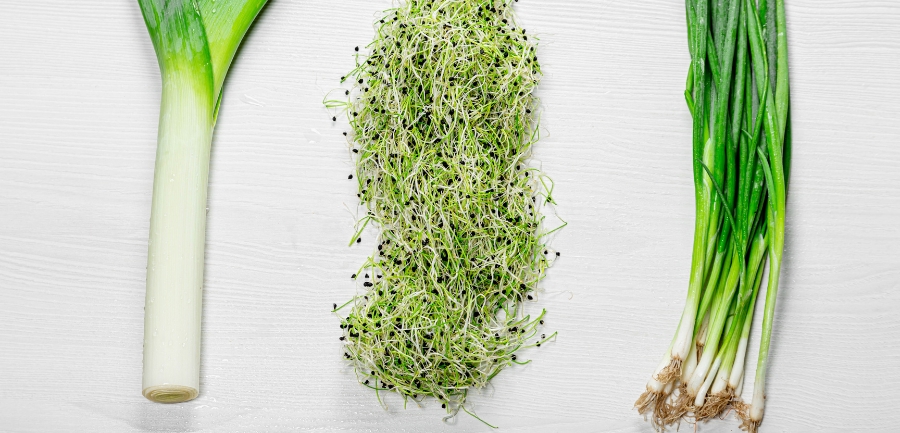
Green onions aren’t just for buying at the grocery store; you can grow them in your garden from seeds! It’s exciting to watch a little seed develop into a tasty stem. Let’s go into the details of green onion seed to harvest cultivation.
Cultivating Green Onion from Seeds
Seed Selection
Choosing the right seeds is the first step toward green onion success. Look for quality seeds from a reputable supplier. You can find different varieties, so pick the one that suits your taste and climate best.
Planting Process
Now, let’s get those hands dirty:
- Soil Prep: Use well-draining soil and consider adding compost for nutrition.
- Sowing: Plant the seeds about 1/4-inch deep, spacing them a couple of inches apart.
- Watering: Keep the soil moist, but not soggy, to encourage germination.
Growing and Harvesting Tips
The joy of watching your green onions grow is unmatched! Here’s how to care for them:
- Sunlight: Green onions love the sun, so pick a bright spot.
- Thinning: If the plants seem crowded, thin them out to allow room to grow.
- Harvesting: Snip them when they reach the desired size, usually in a month or two.
Growing green onions from seeds is a rewarding experience, and it’s easier than you might think. From selecting the perfect seed to snipping fresh green onions for your dinner, you’ll enjoy every step of the process. Who knows? You might even develop a green thumb!
Little Green Onion – Cooking and Handling Small Green Onions
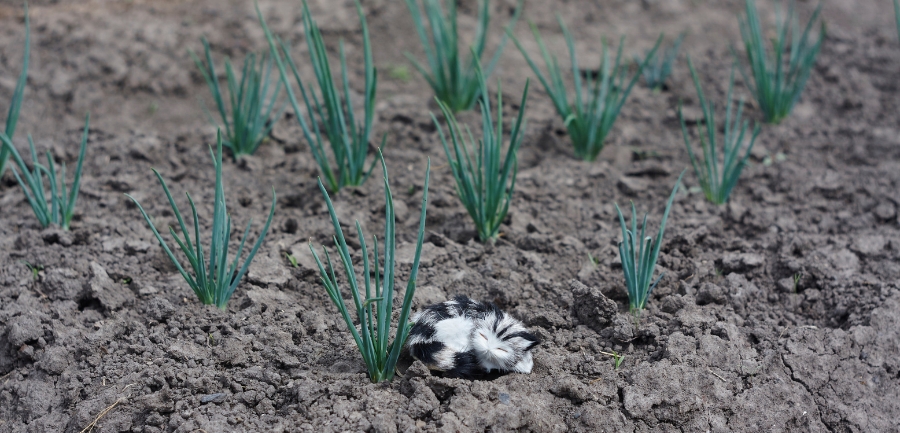
They say good things come in small packages, and when it comes to little green onions, that’s definitely true! These tiny alliums are mighty in flavor and can be used to provide a subtle but noticeable accent to your cuisine. Let’s look into the methods of harvesting and preparing these tasty morsels.
Tips for Selecting and Cutting Smaller Green Onions
Choosing little green onions isn’t so different from their larger siblings, but there are a few things to keep in mind:
- Look for Freshness: Firm stalks and bright green tops are signs of freshness.
- Cutting Technique: Use a sharp knife, and slice them thinly. Small green onions can be delicate, so handle with care.
Incorporating Them into Various Dishes
Now, for the fun part! Here are some delicious ways to enjoy little green onions:
- Salads: Toss them into a fresh salad for a subtle onion flavor.
- Stir-fries: Sauté them with your favorite vegetables for an Asian-inspired meal.
- Garnish: Sprinkle finely chopped little green onions on soups, casseroles, or even eggs for a gourmet touch.
Don’t let their size fool you; little green onions can add a big flavor to your culinary creations. Whether you’re using them for a pop of color or a hint of zest, these small wonders have a place in your kitchen. So the next time you see a bunch of petite green onions at the market, don’t hesitate to grab them. Your taste buds will thank you!
Carbs in Green Onions

Green onions are nutritional powerhouses in addition to being a delicious complement. Green onions include carbs, yet they can actually be part of a balanced diet. Let’s put these tasty stalks under the microscope.
Nutritional Insights – Carbs in Green Onions
Green onions are more than just a taste enhancer; they contain a mix of nutrients. Here’s a snapshot:
- Carbohydrates: A standard serving of green onions (about a cup) contains around 8 grams of carbs.
- Fiber: They also offer dietary fiber, which helps with digestion.
- Vitamins: You’ll find vitamins A and C, among others.
- Calories: Green onions are low in calories, making them a guilt-free addition to many meals.
Importance in Diet
The carbs in green onions aren’t just filler; they have a role to play in your diet:
- Energy Source: Carbohydrates provide energy, and the carbs in green onions are no exception.
- Dietary Fit: Whether you’re on a keto diet or just watching your carb intake, green onions can fit into various dietary plans.
- Flavor without Guilt: Enjoy the zesty flavor without worrying too much about caloric intake.
The carbs in green onions bring more to the table than just taste. From providing energy to fitting into various diets, they offer a blend of benefits that make them a wise choice for health-conscious food lovers. So, go ahead and sprinkle some green onions on your next dish. It’s more than a garnish; it’s nutrition on your plate!
Feeding Green Onions to Animals – What You Need to Know

Green onions might be a staple in our kitchens, but what about our animal friends? Can these common little animals eat this flavorful green? Let’s look at the things you should know before feeding your pets green onions.
Can Chickens Eat Green Onions?
Green onions and chickens – a match made in the coop? Let’s find out:
Safety Considerations
- Moderation is Key: Chickens can nibble on green onions, but it should be a treat, not a staple.
- Clean and Fresh: As with humans, make sure the green onions are fresh and clean.
Benefits and Potential Risks
- Benefits: Green onions can provide some vitamins and minerals.
- Risks: Too many green onions might give eggs an oniony flavor or cause digestive issues.
Can Guinea Pigs Eat Green Onions?
Next, let’s hop over to guinea pigs:
Understanding the Dietary Needs of Guinea Pigs
- Small Portions: A tiny bit of green onion might be okay, but be cautious.
- Monitor Reactions: Every guinea pig is different, so observe how yours reacts.
Safe Quantities and Preparation
- Rare Treat: Think of green onions more as an occasional indulgence for your guinea pig.
- Chop Finely: If you do decide to try, offer small, finely chopped pieces.
Can Rabbits Eat Green Onions?
Last but not least, our bunny friends:
Guidelines for Feeding Green Onions to Rabbits
- Again, Moderation: Rabbits can eat green onions, but it shouldn’t be a regular part of their diet.
- Fresh is Best: Offer fresh, clean green onions and avoid any that look wilted or spoiled.
Potential Health Implications
- Benefits: A small amount can add variety and nutrients to a rabbit’s diet.
- Warnings: Too much can lead to digestive problems, so proceed with caution.
Feeding green onions to animals isn’t as straightforward as tossing them a stalk. Careful consideration of their unique dietary needs and potential reactions is vital. When in doubt, consult with a veterinarian or animal nutritionist to ensure your pet’s health and happiness. Whether it’s chickens, guinea pigs, or rabbits, it’s all about finding the right balance!
Dried Green Onions
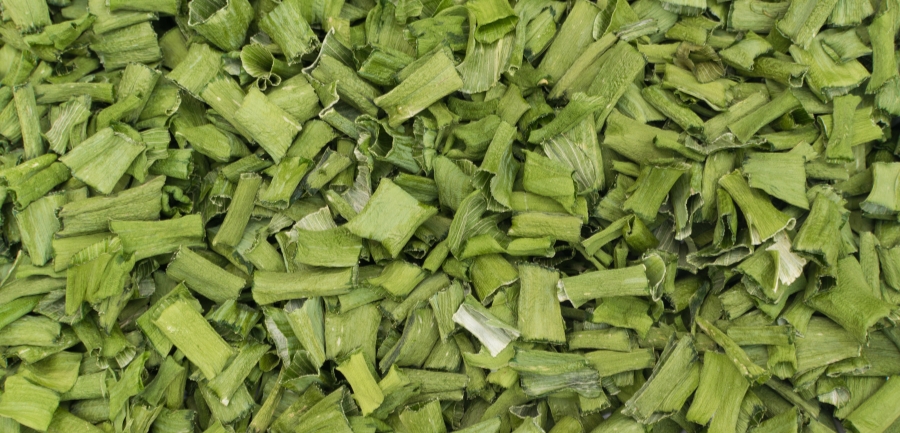
Fresh green onions are delicious, but have you ever considered drying them? Drying green onions is a novel spin on preserving this tasty herb for later use. Explore the history, preparation, and application of dried green onions.
How to Dry Green Onions – Preservation Techniques
Drying green onions is simpler than you might think. Here are a few methods you can try:
- Oven Drying: Place the green onions on a baking sheet and dry at a low temperature for several hours.
- Air Drying: Bundle and hang the green onions in a well-ventilated area for a natural drying process.
- Using a Dehydrator: If you have a food dehydrator, it can make the process even more effortless.
No matter the method, the goal is to remove moisture slowly, preserving the flavor and color of the green onions.
Uses in Cooking
Once dried, green onions offer various exciting applications in your kitchen:
- Soups and Stews: Toss a handful into soups and stews for a burst of onion flavor.
- Spice Blends: Grind dried green onions into powder and mix with other spices for a custom seasoning.
- Garnish: Crumble-dried green onions over dishes for an appealing and tasty garnish.
Dried green onions provide a way to enjoy this classic ingredient long after the fresh ones would have spoiled. Plus, the drying process brings out a unique and concentrated flavor. Whether you grow your own green onions or buy them in bunches, drying them can be a fun and rewarding kitchen experiment. Give it a try, and you might just find a new culinary favorite!
Bunch of Green Onions – Buying and Storing
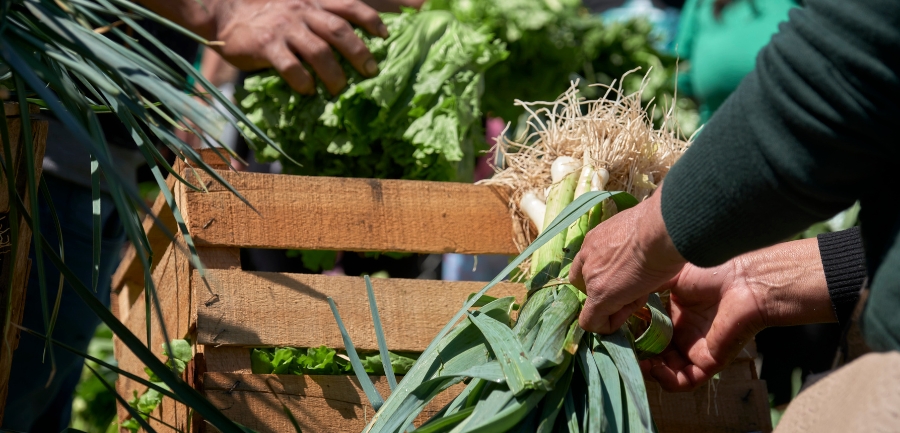
You’re in the market, and there it is—a beautiful bunch of green onions. But how do you choose the freshest ones, and once you’ve got them, how do you keep them fresh? Fear not, green onion aficionados, we’ve got you covered!
Tips for Selecting a Fresh Bunch of Green Onions
Choosing the right bunch of green onions can set the stage for a culinary masterpiece. Here’s what to look for:
- Bright Green Tops: Fresh green onions will have vibrant, green tops.
- Firm Bulbs: Feel the white bulbs at the base; they should be firm, not mushy.
- No Signs of Wilting: Avoid any bunch that looks wilted or has brown spots.
Storage Techniques
Once you’ve found the perfect bunch of green onions, it’s time to get them home and keep them fresh. Here’s how:
- In the Fridge: Store them in the vegetable crisper, loosely wrapped in a plastic bag.
- In a Glass of Water: Trim the ends and place them in a glass with enough water to cover the white parts. Change the water every few days.
- Freezing: You can also chop and freeze green onions in an airtight container if you want to keep them longer.
Buying a bunch of green onions doesn’t have to be a gamble, and storing them doesn’t have to be a mystery. With these tips, you’ll select the freshest bunch and keep them that way until you’re ready to chop, sauté, or garnish. So go ahead, add that vibrant touch of green to your meals with confidence!
Fried Green Onions

Green onions in a frying pan? Absolutely! The delicious flavor of fried green onions can enhance a wide variety of foods. Let’s learn how to fry green onions for a tasty garnish on a steak or a flavorful addition to a stir-fry.
Cooking Techniques – Fried Green Onions
Frying green onions isn’t just tossing them into a hot pan; there’s an art to it. Here’s how to get started:
- Preparation: Start by selecting fresh green onions, washing them, and trimming off the root ends.
- Chopping: Cut them into the desired length, considering how you’ll use them. Slices or longer strips both work well.
- Frying: Heat a small amount of oil or butter in a pan over medium heat. Add the green onions, stirring occasionally, and fry until they become tender and slightly crisp.
- Seasoning: Salt, pepper, or other favorite seasonings can be added during frying to enhance the flavor.
Fried green onions are versatile and can be incorporated into various dishes:
- As a Garnish: Sprinkle over mashed potatoes or a grilled steak for an extra flavor boost.
- In Stir-Fries: Combine with other vegetables and proteins for a tasty stir-fry.
- In Omelets or Scrambles: Add them to eggs for a gourmet breakfast experience.
- In Soups: A handful of fried green onions can provide a unique twist to your favorite soups.
Fried green onions are more than just a simple side or garnish; they can become the star of many dishes. The texture, color, and intense flavor of fried green onions open doors to culinary creativity. If you haven’t tried frying green onions before, grab a bunch next time you’re at the market. Your taste buds will thank you!
To Wrap It Up
Green onions are used in a wide variety of cuisines and even in pet food because of their flavor and versatility. We’ve tried our hand at drying and frying it, as well as picking out the freshest bunch possible. Whether you’re looking to cultivate your own green onions from seeds or seek the nutritional insights of carbs in green onions, the journey with this vegetable is as rich as its flavor. The next time you see a bunch of green onions, remember, there’s a world of possibilities waiting in those slender stalks. Happy cooking, growing, and even sharing with your furry friends!
FAQs
How should I cut green onions?
Wash and trim the ends, then slice the green onions either into thin rounds or longer strips, depending on your preference and the recipe’s needs.
Are you supposed to cut green onions?
Yes, cutting green onions is common, and you can use both the white and green parts for cooking or as a garnish.
Do you eat the green stems of green onions?
Absolutely! Green onions have edible green stems that add a mild, fresh flavor to a variety of meals.
How do you cut green onions with scissors?
Wash the green onions, then use kitchen scissors to snip them into desired lengths. Neither a knife nor a chopping board is needed for this speedy procedure.

